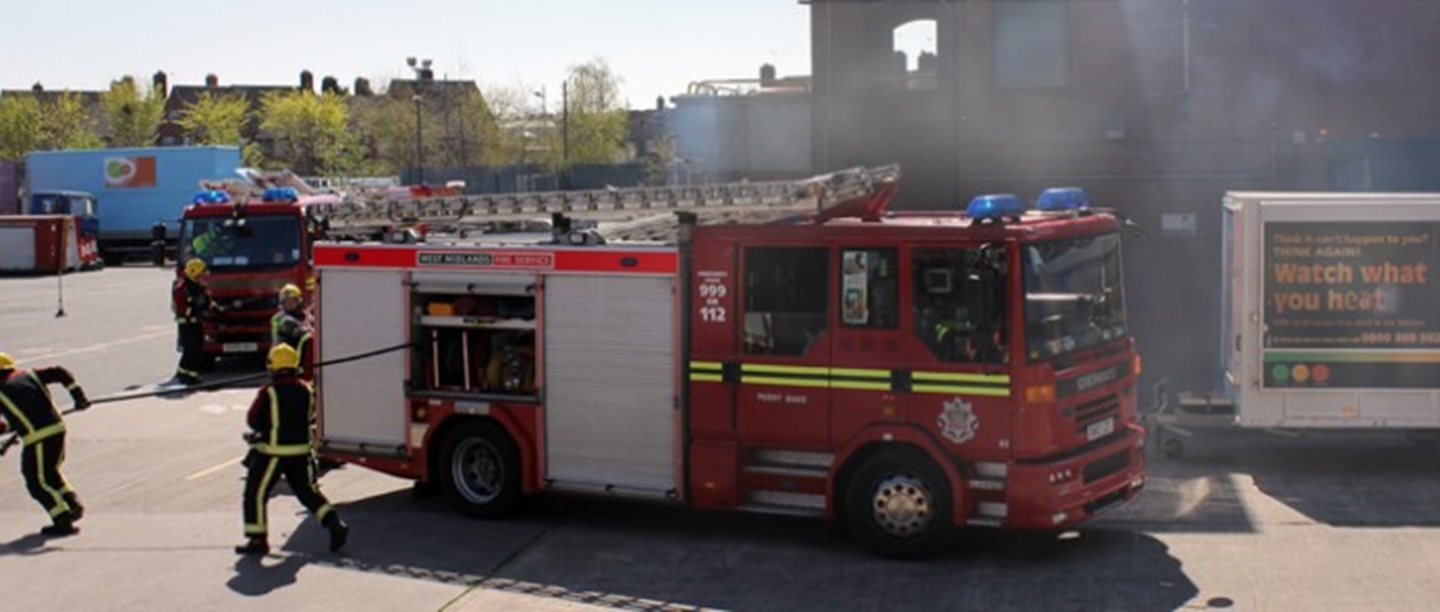
A crowd of people are gathering around a burning building. Fire fighters battle to control the smoke, before dashing inside. They emerge, carefully carrying a body. They talk to a lady waiting anxiously for news. Then a group of people wearing tabards and protective clothing enter with the fire fighters, and emerge with a manuscript, a large oil painting, a silver candelabra, a carpet…
Earlier in the day, the ‘treasures’ (props, not real objects you’ll be glad to hear!) had all been meticulously arranged in the building by English Heritage. The fire had been carefully planned at the West Midlands Fire Training Academy, and the ‘body’ - thankfully a dummy - had been placed within the building.
The action was all part of an Emergency Planning and Practical Salvage course, which I had the opportunity to attend along with property staff who could be first on the scene if a real disaster were to happen at an English Heritage property.
From Wellington’s boots to Darwin’s notebooks, the English Heritage National Collection includes objects that have played a pivotal role in shaping England’s story. Of course, if a real disaster were to occur at a property, the first priority would be to make sure everyone is safe. But after everything is secure, would we be able to save some of England’s most important historic treasures?
Kitchen table set up like a historic house, ready for the fire
That’s what the course aims to do – participants are taught how to work with the Fire Service, what kind of equipment they’ll need on-site, how to carry out the salvage operation safely, and how to care for collections once they’ve been exposed to fire or floods.
Attending the course was a fascinating behind-the-scenes look at how we care for our collections. We learnt that if a historic object is exposed to water, it’s the first few hours that are the most crucial to avoid long-term damage and the onset of mould. So although the fire was the most dramatic event of the day, much of the course concentrates on the best method to give ‘first aid’ to collections. I was surprised to find out that if you’re faced with a large amount of damaged items, it can be better to freeze some, to preserve them in their current state until experts arrive, while others should be slowly dried in an air tunnel (a way to increase air circulation around the objects).
'Manky' the Squirrel, ready for his kebab-stick-blow-dry
English Heritage also have a 24 hour hotline manned by the Conservation team. They can give advice to English Heritage site staff on how best to protect collections that are at risk from fire or flood or care for collections that have been damaged.
One of the most entertaining elements of the course was when everyone was introduced to ‘Manky’ the stuffed squirrel, who had just had an accidental bath. The Conservation team all have a soft spot for him, as he’s made an appearance on emergency courses for over 10 years. A demonstration by the conservators showed how to dry his fur carefully - with a kebab stick and a hairdryer on cool - to limit the damage caused.
Everyone got the chance to put their new skills to the test in the live simulation later in the day. The ‘rescued’ treasures were taken to a secure building nearby and the vast array of paintings, sculptures, furniture, books and other objects were treated, dried and packed quickly and carefully to preserve as much as possible.
Books drying out after the fire
Along with salvaging the collections, in a real situation the Incident Coordinator might have to meet other demands, like answering questions from local press. So, displaying dubious acting skills not called upon since my pivotal role as a ‘piece of snow’ in the Wizard of Oz at University, I played the part of a local reporter trying to get a scoop on the fire.
Although I very much hope none of the skills learnt on the course will ever need to be put into practice (including my acting), it’s reassuring to know that our collections have the best possible chance of survival if a disaster struck!
Caring for the National Collection
The National Heritage Collection includes over 400 historic sites and monuments, and over 500,000 objects, each with a unique story to tell about our past. The Collection ranges from prehistoric stone circles to a 1960s nuclear bunker, and of course Stonehenge and Hadrian’s Wall.
You can help us care for the collection for future generations by becoming a member of English Heritage (which also gets you free access to historic properties) or by making a donation.
See our list of 10 objects which tell the story of England